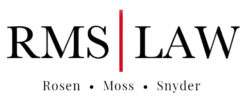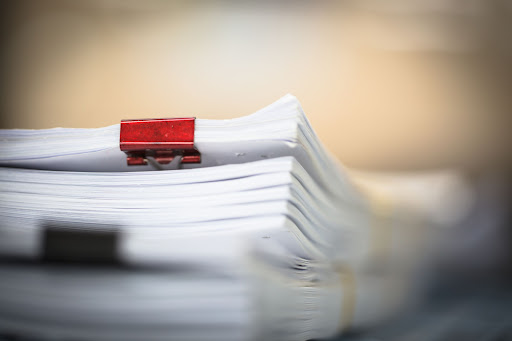A successful personal injury recovery claim often depends on the details. You should have all of the facts and paperwork to back up your claim if you’ve been injured in a car accident, hurt on the job, bitten by a dog, or otherwise harmed through actions that weren’t your fault. A team of talented personal injury attorneys like those at Rosen Moss Snyder LLP can help you get the settlement you deserve by using these crucial details to back up your claim.
However, without the right documents, it’s much harder to prove your case — which is why proper preparation is essential to your success. To ensure you’re as prepared as possible, we’ve gathered more information about the documents you and our legal team will need for a personal injury claim. Here’s an overview of the important documents you should have on your personal injury checklist.
Official Reports From Law Enforcement
Oftentimes, especially after a car accident, there will be reports filed by the police, fire department, and/or emergency services. A law enforcement report is the foundation of a great personal injury case, and you can easily obtain one from the police department where the incident occurred — police reports are available to all because they are considered a part of the public record. It’s possible that there’s more than one report, too, as multiple officers could have witnessed the accident.
If you’ve been injured at work, or in a public place, like a store, restaurant, or hotel, then there’s probably an incident report filed by the company. You can also ask for a copy of this report, as it may contain details pertinent to your accident. However, be mindful that while police reports should be on every personal injury checklist, they aren’t sufficient documentation alone — more essential information must be gathered to support personal injury accident claims.
Testimonies and Photos of the Accident
Your personal injury checklist should include more than just documents but photos as well. Having photographs in front of a judge or jury can be a powerful way to demonstrate how the accident happened and the immediate effects. These can be police photos, pictures that you took yourself, or those from other witnesses. Additionally, there are many different things you can photograph that can help your case, including the vehicles present at the scene, the location the accident took place, and even your own injuries. Taking pictures of your injuries over time can help show how your injury has progressed in the time since the accident. Regardless of what photos you include, be sure to have the date and location labeled for any pictures that you have.
Having testimony from witnesses will also prove to be helpful. Witnesses are individuals who saw or heard the accident and can provide important details regarding the event, whether they be someone present at the time or from law enforcement. They can write down an account of the event that will both serve as evidence in the claims process and prevent them from altering details later on. Any information from witnesses can be essential for your claims, given how it can help recreate the scene of the accident.
Doctor’s Treatment Logs and Medical Records
If you were injured in an accident, then you more than likely received medical treatment to recover from your injuries — which should absolutely be included in your personal injury checklist. Having your medical records, especially ones that state which injuries were caused by the accident and how, can go a long way toward helping advocate for your interests. Granting your attorney access to these records early can greatly speed up the process by letting them know more information about the full extent of your injuries. However, it may take some time to receive these documents from your doctor, so be sure to request them as soon as you can.
It’s worth noting that medical records aren’t just for immediate treatment but for all forms of care you received following the accident. This can include meetings with a chiropractor or physical therapy or even emergency room records and rehabilitation reports. By having access to these reports, your lawyer can argue for coverage of these medical bills, in addition to time lost at work or any effects from a reduced physical capability.
Physicians aren’t the only ones who can provide evidence for your personal injury checklist — you can as well by writing a recovery journal. With this journal, you can outline your injuries and how they’ve impacted your day-to-day life after the accident so that you don’t forget any useful details. An attorney can then utilize this journal to show the ways that you’ve been suffering.
Have You Been Injured? We Can Help!
If you’ve been hurt in an accident or have a family member who has, you can trust the team at Rosen Moss Snyder LLP to advocate for you. In addition to helping with personal injury accident claims, our firm also offers a variety of other services. Whether you require the assistance of a professional short-term disability lawyer or seek the guidance of a skilled ERISA attorney in Philadelphia, we will always stand by your side in times of need. Give Rosen Moss Snyder LLP a call today to see how a personal injury lawyer can help you!

